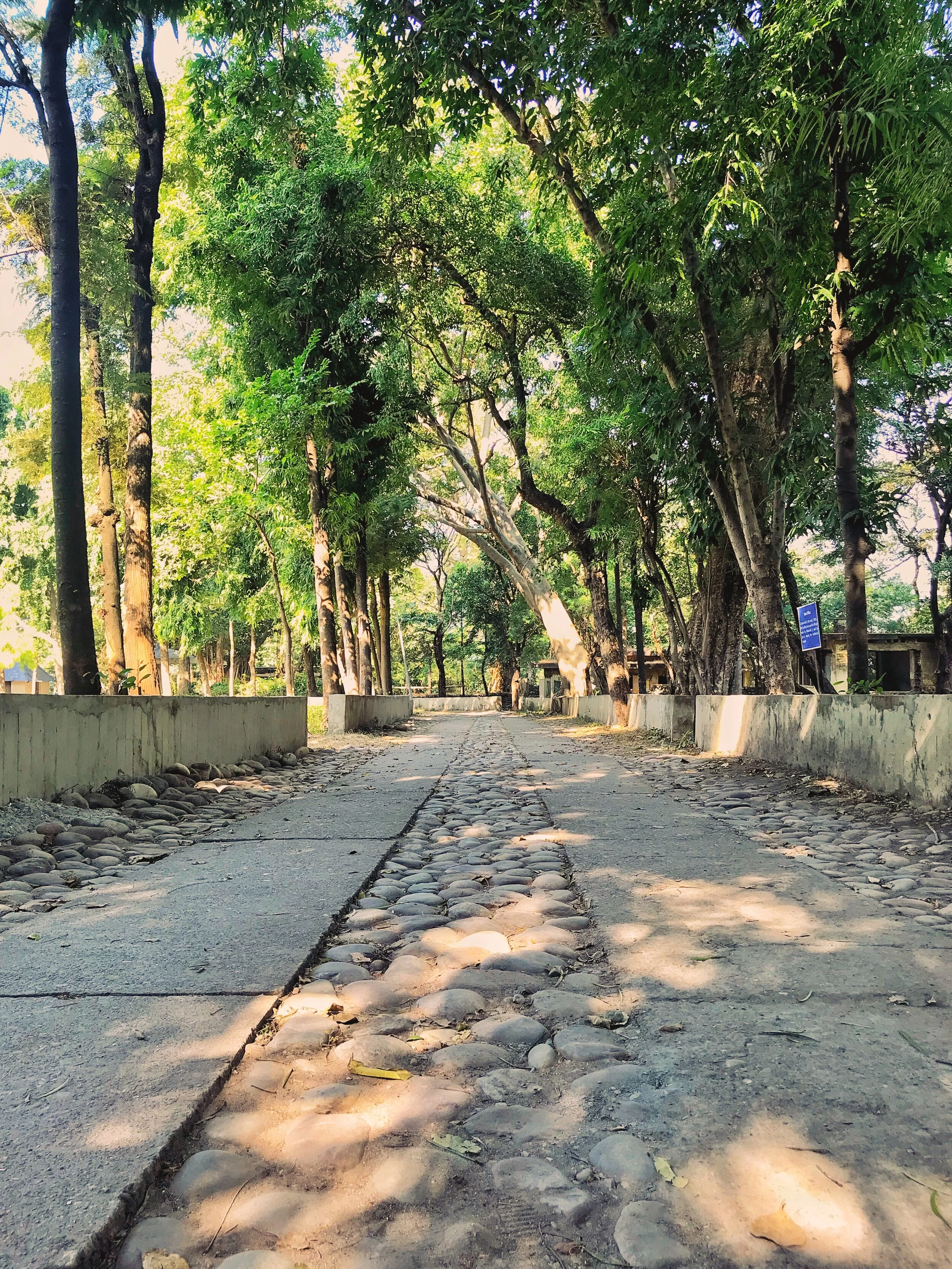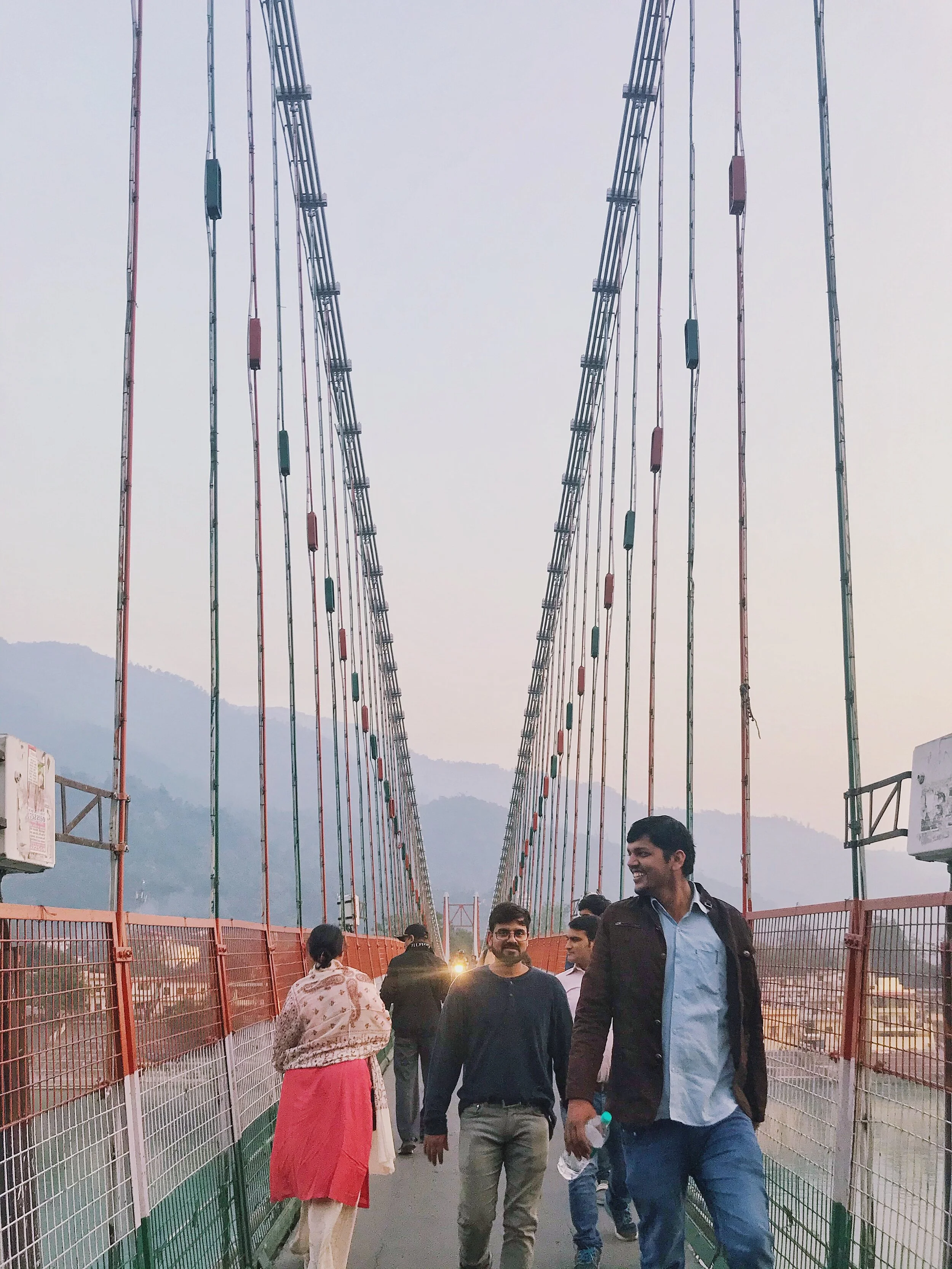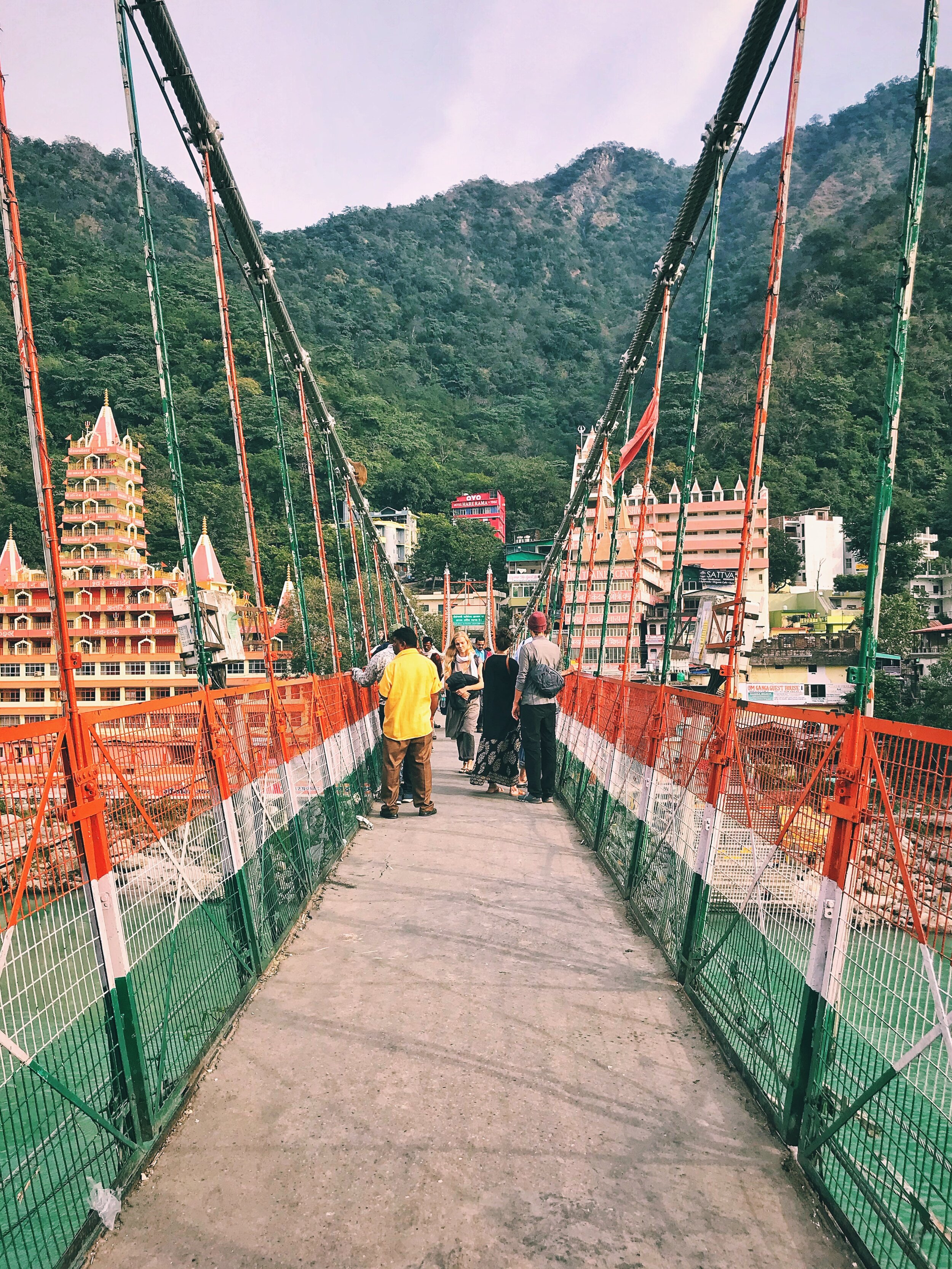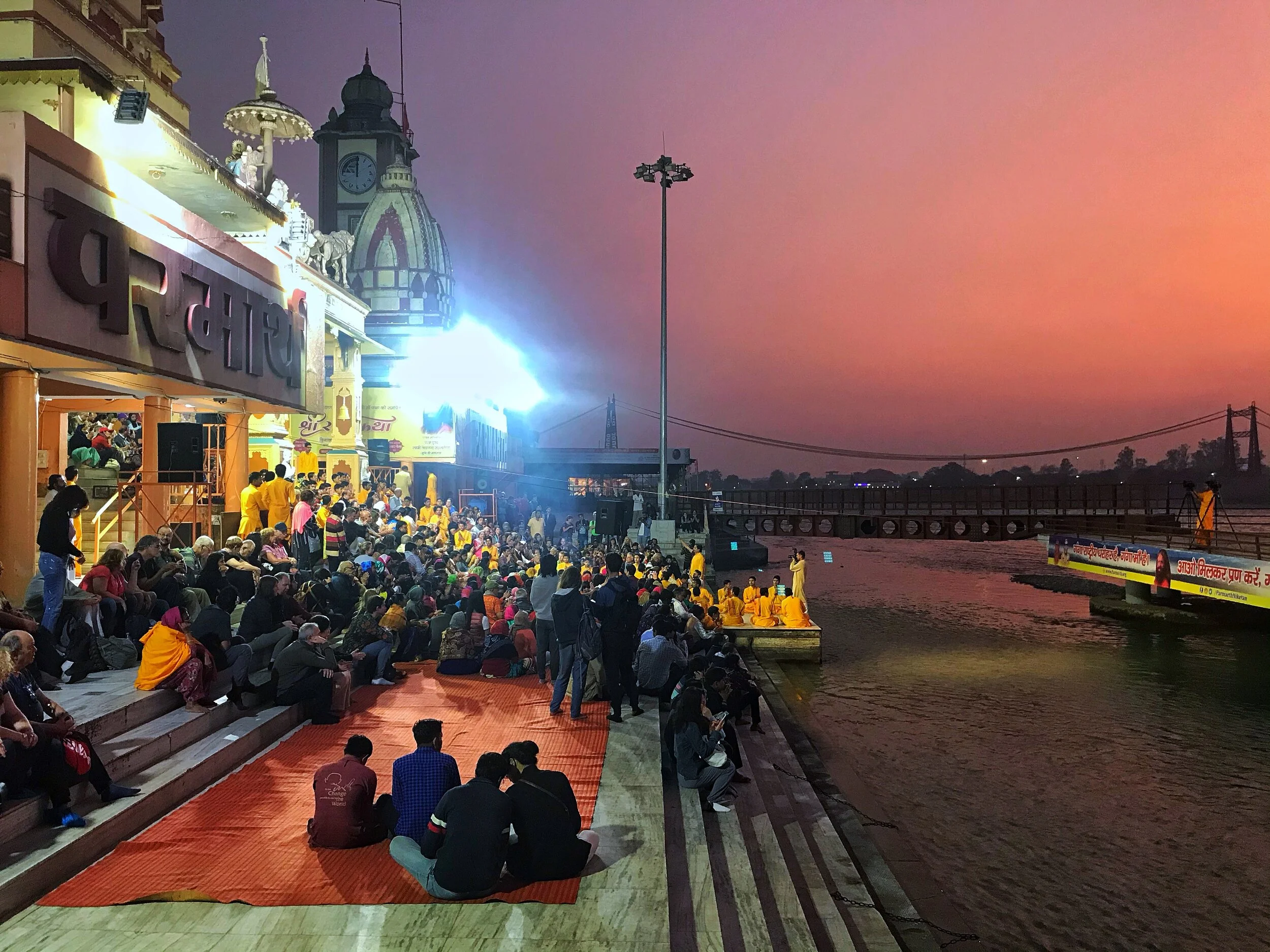Rhythm of Bricks and Stones and Souls
From Jhula bridges to idyllic ashrams flows a much familiar rhythm along with the river Ganges
The moment my eyes met with the harmoniously flowing Ganga river, my beliefs whispered to me that the stories about her could be true, about the river that is as ancient as the trees and the mountains here. This 'Center of Meditation and Yoga' has come a long way with its history, and I was intrigued to explore it a little more. Yes, I was in Rishikesh.
I often heard the stories about this pilgrim city from my mother when she visited Rishikesh in her youth around the 80s. The star of them all being the Lakshman Jhula. As a kid, I would almost imagine it swinging up and down like a real jhula as you walked across to the other side. But, right before I visited Rishikesh, I researched its history and found the legend. One day, Lakshman, the younger brother of Lord Ram, was passing by the city of Rishikesh. At a distance, he saw a crowd standing by the edge of a hill. After finding out that those people were perplexed as they couldn't cross to the other side of the river because of the massive Ganga, he came up with a solution. Taking two jute ropes, he crossed the river for the first time (though there aren't explicit details as to how he crossed it, the story is open to creativity). And so, in his honor and gratitude, the Jhula is coronated after his name. But wait, that's not it. When you walk over to the foot of the Jhula's west side entrance, there stand two plaques. The first gives credit to Lakshman, while the second one names someone else for its construction. Unfortunately, the first bridge built of jute ropes washed away in the floods, so was the second one. The current Lakshman Jhula is the third installment, which will be replaced soon with a permanent alternative.
The view of the Lakshman Jhula is fascinating. It has managed to embrace everyone in its open narrow arms, from humans to monkeys to cows and now motorcycles too! Its swing adds the fun swaad anusaar (as per taste) while walking to the other side. If the view of the bridge is fascinating, the view from the bridge is magnificent. The Ganga river flowing serenely underneath towards the setting sun hooks you to the spot. The growing commute and inhabitants in the city called in for two more bridges constructed to ease up the vehicle traffic on the iconic bridge - Ram Jhula and Janaki Setu.
An evening at Parmarth Ashram.
The Ganga I was seeing flowing through Rishikesh played a rhythm of her own, a tune of tranquility and turquoise, and that very same energy flowing through the body and soul of every resident. Visiting the Beatles Ashram proved as an affirmation of my theory. I watched the Gray Langur leap from a graffitied Sadhu's hairdo on one of the abandoned property and landed expertly on the fence wall a few feet away. Once occupied by sages, yogis from around the world, and the Beatles Band for a brief period, the Chaurasi Kutiya (which translates to 84 huts and a.k.a Beatles Ashram) now lies forsaken with the only wild inhabitants like monkeys and birds. After its desertion, a few graffiti artists thought of preserving the long gone essence and history of the ashram. Their brilliant art displays have now awakened curiosity amongst the travelers who visit the city only for the ashram. There are quotes from the Beatles, their portraits, the yogi culture of Rishikesh, and also the natural habitat. Some of the graffitis are inspiring and as well as contemplating. From all the art, one graffiti of a Langur walking away with the word 'Hope' left behind him was my favorite. It looks ordinary at first, but the more you watch it, the more it makes you wonder, or should I say, Imagine. The words of John Lennon, "And they say I am a dreamer..." goes on a loop as you leave the place. That's when I realized what an impactful message the Beatles Ashram has been sharing with the travelers who visit it.
Vaanar Sena on Lakshman Jhula.
Surrounded by forest and peace, it must have been the perfect place for meditation in its good days. Some of the huts are designed in the shape of an ostrich's egg, having two floors with a soothing view of the forest. The ashram even had an individual printing press and a pyramid styled building with multi-foil arches. Yet, what once pulled praises of beauty and brilliance could eventually become a site of skeletal bricks and stones is an astonishing tale to tell.
Since the stay of the Beatles at the ashram popularized, the original name slowly faded away, and it has now come to know as the Beatles Ashram. Tourists from abroad make it a point to visit the ashram where the most famous English rock band in the world stayed. One of the buildings now turned into a registration office, and a small museum has put up photo archives in one of their rooms. It gives you a glimpse into the epoch that once saw Beatles Ashram in its most candid moments.
A gathering hall now left abandoned at the Beatles Ashram a.k.a Chaurasi Kutiya.
Even in these unoccupied establishment flows an unusual rhythm that still echoes in this holy city of Uttarakhand. Not just the Beatles ashram but also the well-known Parmarth Ashram, Triveni Ghats, the ever swinging Lakshman Jhula, and all the exceptional places here have found their own identity in Rishikesh. They all remind me of the notes of an evocative tune that fall perfectly in line with the music sheet, play them together, and you'll hear a calm and composed melody that slowly begins to flow through your body and soul.
















